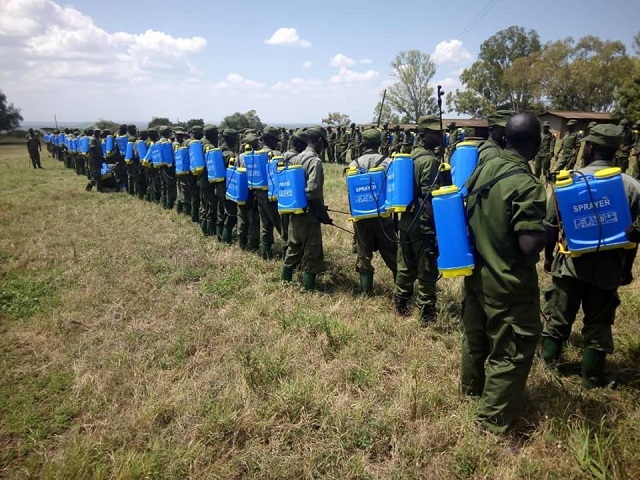The state says it will take two more months to monitor the spread of desert locusts in the affected areas to completely have it dealt with.
The Ministry of Agriculture’s Crop Production department said 17 out of the 27 affected counties are still severely affected by the locusts that first hit Mandera and Wajir counties in December. The department’s Administration Secretary Kello Harsama on Monday said that some of the affected counties including Mandera and Wajir have reported the end of the invasion with Kitui making significant progress.
Desert locust destroying crops in Ethiopia may spread to Kenya, UN warns!
Mr Harsama was spoke at Isiolo hotel where he opened a training workshop for officials from 13 of the affected counties amid Health Ministry’s advise for the public to avoid over crowding and observe social distance rule over COVID-19 scare.
The five day training revolves around the desert locust biology, behavior, ecology, survey (mapping), control and use of pesticides was also attended by top ministry officials from the crop protection unit, Tesfayohammes Mehan of Desert Locust Control Organisation (DLCO)-East Africa and Christian Pantenius of UN’s Food and Agriculture Organisation (FAO).

Despite the slowed fight against the spread of the deadly pests, Harsama added that they have been overshadowed (by COVID-19) as he claimed that they are still active on the ground doing daily aerial and ground spraying and continuous training of personnel from counties.
He justified the need for more time to deal with the locusts which are still laying eggs and reproducing migrating to other areas. He also added that the department is well equipped and has enough chemicals to stop further within two months.
‘‘It’s not safe yet, even in northeastern counties. The locusts have laid eggs and the area is still under a threat of more invasions from neighboring countries especially Somalia,’’ said Harsama.
The State, FAO, and DLCO has eight specialised planes and 10 vehicles with fixed sprayers from the ground to check the spread of the pests in the remaining affected counties that include Baringo, Nakuru, and Nyandarua. The department identifies Isiolo, Marsabit, Samburu, and Laikipia as the most affected.
The state has deployed more than 800 trained National Youth Service to supplement the efforts of the counties. From the training, the counties will be expected to train local youth to help in ground spraying of the locusts.
















